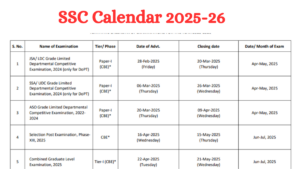Directions (1-5): Study the following information carefully and answer the given questions:
There are eight persons P, R, Q, U, W, S, T, and V are seated in a row (but not necessarily in the same direction). Some of them are facing towards north direction and some of them are facing towards south direction.
Q sits 2nd to the left of the one who is 3rd to the right of T. T is not facing towards the north. V and Q faces opposite direction. P does not face the same direction as W faces. Q sits 4th to the left of R. W is an immediate neighbor of U, who faces the same direction as R faces. Neither Q nor T sits any of the extremes ends of the row. S sits 2nd right of U. Only one person sits to the left of the T. R does not sit any of the extremes ends of the row. P, who sits at one of the extreme ends of the row, sits 2nd left of U. S faces towards south direction. The one, who sits 3rd to the right of the one, who sits immediate right of W, doesn’t face to the north direction.
Q1. How many persons in a row are facing towards north direction?
From the given condition, U, who faces the same direction as R faces. Hence Case-II will be eliminated. Case-I is continued with the remaining conditions, S sits 2nd right of U. S faces towards south direction. S sits 2nd right of U. The one, who sits 3rd to the right of the one, who sits immediate right of W, doesn’t face to the north direction. V and Q face opposite direction. P does not face the same direction as W faces.
Q2. Who among the following sits immediate left of the one who is 3rd to the left of R?
From the given condition, U, who faces the same direction as R faces. Hence Case-II will be eliminated. Case-I is continued with the remaining conditions, S sits 2nd right of U. S faces towards south direction. S sits 2nd right of U. The one, who sits 3rd to the right of the one, who sits immediate right of W, doesn’t face to the north direction. V and Q face opposite direction. P does not face the same direction as W faces.
Q3. The one who sits immediate right of W, is facing in which direction?
From the given condition, U, who faces the same direction as R faces. Hence Case-II will be eliminated. Case-I is continued with the remaining conditions, S sits 2nd right of U. S faces towards south direction. S sits 2nd right of U. The one, who sits 3rd to the right of the one, who sits immediate right of W, doesn’t face to the north direction. V and Q face opposite direction. P does not face the same direction as W faces.
Q4. Who sit at extreme ends of the row?
From the given condition, U, who faces the same direction as R faces. Hence Case-II will be eliminated. Case-I is continued with the remaining conditions, S sits 2nd right of U. S faces towards south direction. S sits 2nd right of U. The one, who sits 3rd to the right of the one, who sits immediate right of W, doesn’t face to the north direction. V and Q face opposite direction. P does not face the same direction as W faces.
Q5. How many persons sit to the left of R?
From the given condition, U, who faces the same direction as R faces. Hence Case-II will be eliminated. Case-I is continued with the remaining conditions, S sits 2nd right of U. S faces towards south direction. S sits 2nd right of U. The one, who sits 3rd to the right of the one, who sits immediate right of W, doesn’t face to the north direction. V and Q face opposite direction. P does not face the same direction as W faces.
Directions (6-10): Study the following information carefully and answer the given questions.
In a certain code language, ‘Check financial cyber crimes’ is written as ‘si fr pe pt’ ‘Financial cyber crimes’ is written as ‘pe pt fr’ ‘Trends in financial cyber’ is written as ‘ch pt gi fr’ ‘Cyber security in’ is written as ‘pt gi yu’. ‘Trends of financial rule’ is written as ‘fr ch zo fo’.
Q6. What is the code for ‘financial’ in the given code language?
Q7. Code ‘pt’ is for which word in the given language?
Q8. Which one of the following could be code for ‘cyber crimes prevention’?
Q9. What is the code for ‘rule’ in the given code language?
Q10. If ‘growing trend of cyber’ is coded as ‘no pt ch zo’ in the given code language, then what is the code for ‘rule growing cyber world’?
Directions (11-15): In these questions, relationship between different elements is shown in the statements. These statements are followed by two conclusions:
Q11. Statements:
A Greater than Equal to B, C Greater than Equal B, K Equal A Less than E
Conclusion:
II. E Greater than B
II. EGreater thanB (True)
Q12. Statements:
A Equal D, B Less thanL, C Greater than Equal A, DLess than Equal B
Conclusion:
II. LLess than Equal D
II. L>D (True)
Q13. Statements:
G≥Q, S<K, Q≥S, K<M>I
Conclusion:
I. Q>I
II. M≥S
II. M≥S (False)
Q14. Statements:
J>N, M>Q, N=P, R≥P, M=R
Conclusion:
I. J≥Q
II. Q>J
II. Q>J (False)
Q15. Statements:
P=N, R≤Q, M<J, R≤J, Q>N
Conclusion:
I. N≥R
II. N
II. N<R (False)
You may also like to Read:







 GA Capsule for SBI Clerk Mains 2025, Dow...
GA Capsule for SBI Clerk Mains 2025, Dow...
 The Hindu Review October 2022: Download ...
The Hindu Review October 2022: Download ...
 SSC Calendar 2025 Under Review, Dates So...
SSC Calendar 2025 Under Review, Dates So...





